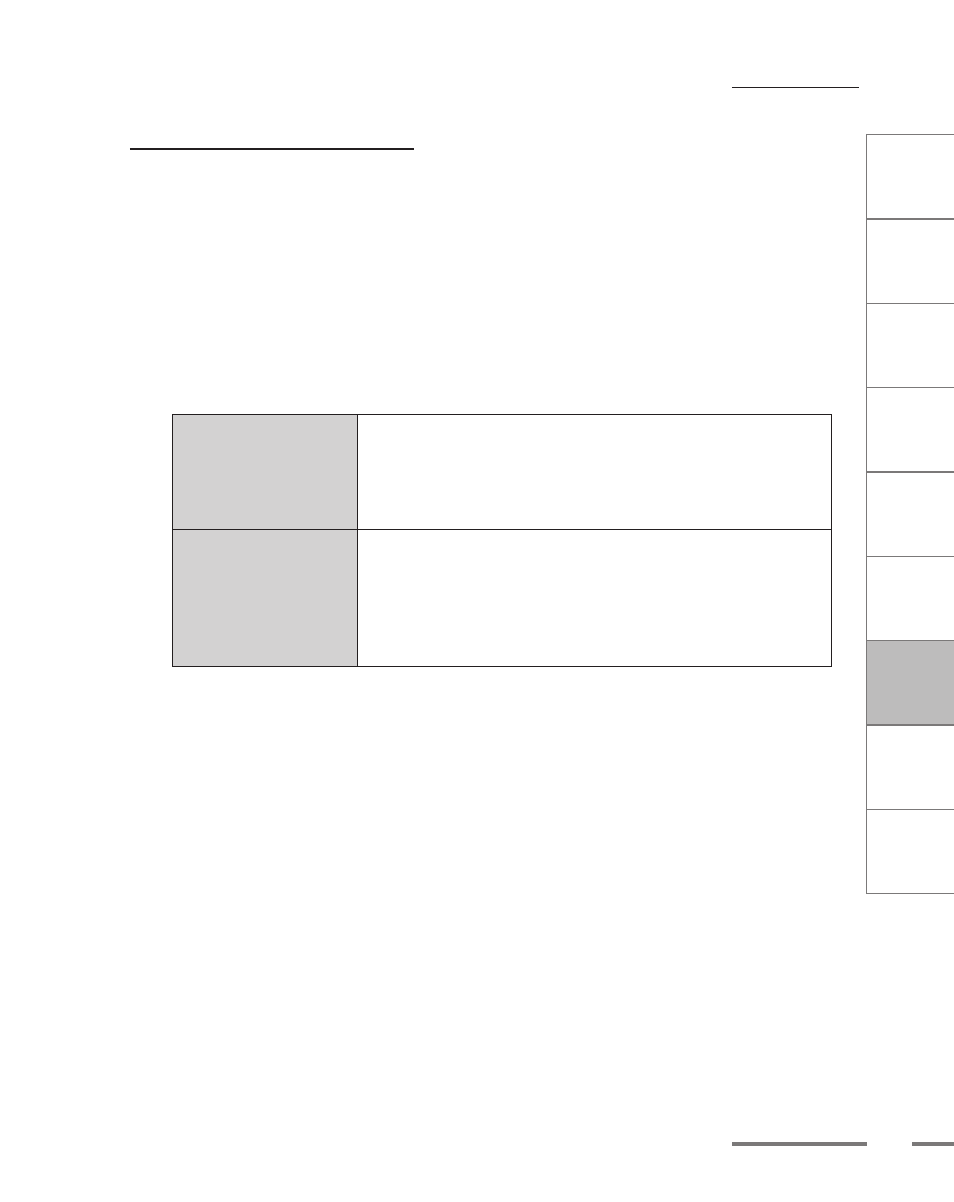Flash target, Common options, Flash-specific options – Grass Valley ProCoder 3 User Manual
Page 145: Target options, Video, Audio

CHAPTER
1
CHAPTER
CHAPTER
3
CHAPTER
4
CHAPTER
5
CHAPTER
6
CHAPTER
7
C
o n
t e
n t
s
I n
t r
o
d
u c
t i
o n
I n
s t
a l l
a t i
o n
ProCoder 3
W
i z
a r
d
Using ProCoder
Helpful Hints
ProCoder
Reference
Glossary
Index
145
Target Options
Flash Target
Common Options
See Common Target Options.
Flash-specific options
Video
Multiplexer type
Specifies the type of a file to create.
Number of passes
For VBR encoding, select 1 pass or 2 pass encoding.
1 pass
Single-pass VBR encoding varies the bitrate on-the-fly, starting at
the specified bitrate, increasing toward the specified maximum in
complex segments and decreasing toward the specified minimum
in less complex segments. In general, single-pass VBR output will
be as-large or larger than CBR output at the same video bitrate.
2 pass
Two-pass VBR performs an analysis pass before the encoding
pass. The analysis pass determines the best bit allocation for the
encoding pass. The actual bitrate varies between the specified
minimum and maximum bitrates. The increases and decreases in
bitrate are balanced to keep the average bitrate to the specified
video bitrate.
Audio
Audio Compression
Specifies the type of the compression used for audio.
Bits/Sample
Specifies the file's audio sample size. The available bits per sample settings depend
on the audio encoder selected.
The number of bits per sample determines how well a particular level can be
represented. More bits per sample allows for better representation of audio changes
in the Source but results in a larger file size.
The combination of sample rate and bits per sample determine the overall quality of
the audio.
